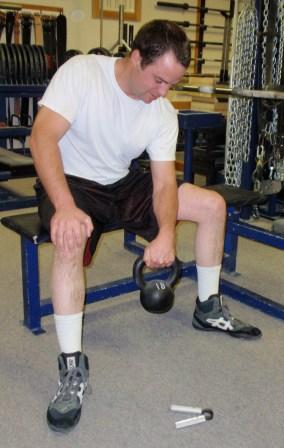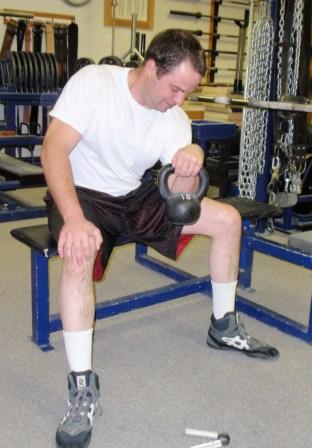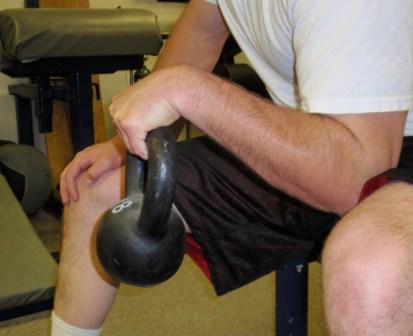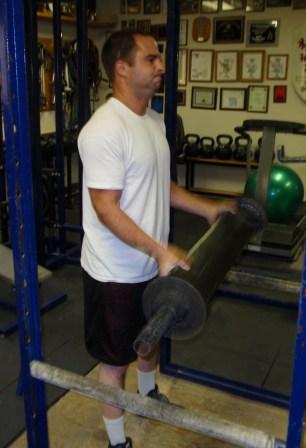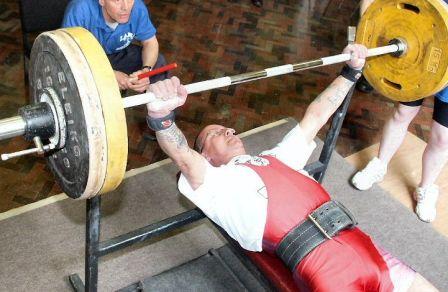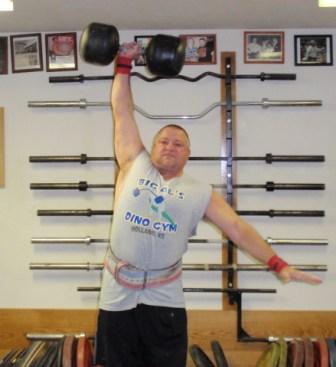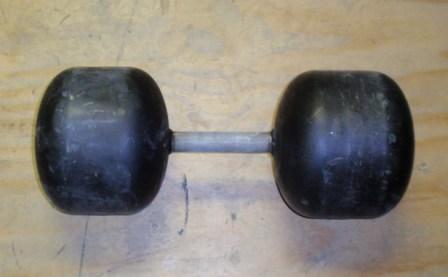The Snaggin’ Curl
by Al Myers
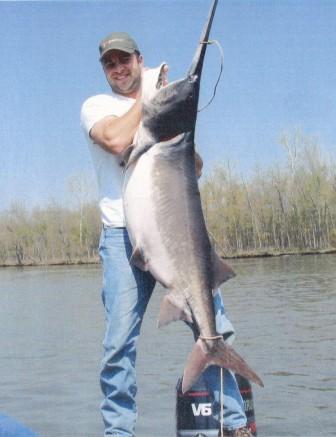
Dino Gym member Casey Barten put his weight training to good use in landing this 75 pound paddlefish.
As promised yesterday, today I am going to present an exercise to you that will show that weight training virtually helps EVERYTHING. Most people would think fishing was a relaxing low effort sport – but that depends on the type of fishing you do! For the past several years Casey and I have taken part in snagging for paddlefish (also known asspoonbills) during the Missouri season. Paddlefish are one of America’s largest freshwater fish, and can grow to weights of over 100 pounds. Every spring, paddlefish will make their “spawning runs” and migrate into the upstream rivers from the reservoirs. However, there is one big problem with catching paddlefish – they are filter feeders and won’t bite on a baited hook! So we use a much more strenuous method of “catching them” – we snag them! (All of this is legal by the way). I was introduced to this unique way of catching fish by a good friend, outdoor enthusiast Kevin Yaeger, and I was immediately HOOKED (or you could say snagged)! It is by far the most physically draining type of fishing I have ever done. It is done like this – you allow the heavy pound and half sinker on the end of your line to touch bottom, at which time you give a hard pull on the rod, fighting the water resistance of the three big treble hooks on your line. If you don’t snag anything – you do it again and again at the rate of one pull every 5 seconds. The harder you work at it – the greater chances you will have success. Reeling in a 75 pound paddlefish is the easy part. It is the thousands of “pulls” you do before you snag the big paddlefish that wears you out.
So what does this have to do with weight lifting?
Well, after the first year I went snaggin’ I was somewhat embarrassed by how I was “worn out” afterwards. I don’t train for endurance! Casey and I decided that prior to the next season we had to get ourselves in shape for snaggin’! This is what lead to the Snaggin’ Curl. Many years ago I was introduced to this exercise by armwrestler Jason Payne. He told me it was an exercise that the armwrestlers loved – and they called it the Cobra Curl. I’m always up to try something new so I gave it a try and found that it worked the EXACT same muscles that are required in pulling back on a fishing pole – thus Casey and I renamed it the Snaggin’ Curl!!
This exercise is very easy to do. You can use a dumbbell, but I prefer a kettlebell. Sit on a seat and place the kettlebell between your feet. Place your elbow of the lifting arm against your leg, and grab the handle of the kettlebell with an over the top grip. Lift the kettlebell straight up from the floor until the wrist is turned over and you can’t go any higher. At the top position hold the kettlebell for a slight pause, at which time you lower the kettlebell slow back to the floor and repeat the motion. I am not usually a high reps lifter but we will go up to 50 reps per set with this exercise – all in a slow and controlled motion. Do several sets. When finished your forearms are BLASTED! Rest a minute and then do them with your other arm – after all I rotate arms when snaggin’ and I don’t one to be my weak link.
Casey and I are now a month away from snaggin’. We are training the Snaggin’ Curl hard – hoping that our training will pay off and we will snag a BIG ONE this year!!
